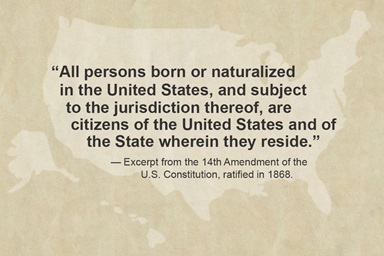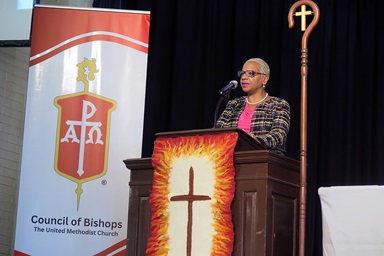Here is some encouraging news to start the year.
For the first time in 11 years, United Methodist annual (regional) conferences in the United States reported an increase in total professions of faith in 2012.
Preliminary figures for professions of faith show a gain from 123,986 in 2011 to 124,635 in 2012 — less than 1 percent but still an upward trajectory.
Many of the leaders at this fall’s Council of Bishops meeting in Lake Junaluska, N.C., applauded the news as a welcome development after decades of declining U.S. membership and worship attendance.
“Clearly this is the beginning of everything that we’ve been working toward for the past couple of years as we strengthen congregations to make disciples who engage in the world in justice and mercy ministries,” said New Jersey Area Bishop John R. Schol, who has led the denomination’s Vital Congregations Initiative.
“What this really says is we’re starting to move in the right direction. Certainly, it’s not a trend. … But it’s a hopeful sign for the journey ahead.”
For professions of faith, churches count youth completing confirmation and adult new church members who make a profession to follow Christ. The number does not include people who transfer from one church to another.
Twenty-eight of 59 U.S. conferences reported gains in their professions of faith to the General Council on Finance and Administration, the denominational agency that tracks conference statistics. The count includes conferences in each of the five U.S. jurisdictions.
The rise was just one change the Council of Bishops cheered during a status report on the denomination’s efforts to foster more highly vital congregations.
U.S. churches also reported overall increases in small groups, mission engagement and giving to mission.
“We’re not seeing (an increase) yet in worship attendance,” Schol told United Methodist News Service. “But that’s generally the last one to come.”
How one church drew new Christians
Leading people to Christ requires a lot of love and does not always lead to immediate results, as the Rev. Leah Hidde-Gregory in the Central Texas Conference attests. Her conference was among those reporting growth in professions of faith; it also saw 2012 gains in membership and worship attendance.
Hidde-Gregory saw that growth first-hand as pastor for six years, including 2012, of Frost (Texas) United Methodist Church. In that time, the 125-year-old congregation in a town of about 600 people saw 59 professions of faith.
How did the rural church do it?
“We invested in people, and we listened, and we didn’t judge,” Hidde-Gregory said. “And we loved, we loved, and we loved some more.”
While 14 of the professions of faith at Frost came from confirmands, the vast majority came from adult new Christians. Many were transients attracted by the town’s cheap housing, some with histories of substance abuse. They came to the church for its free Wednesday night meals, its food pantry and its help for those seeking work, and they stayed for worship.
“I had tremendous laity there who loved until it hurt,” the pastor said. “It wasn’t being in ministry to. It was being side by side, involved in people’s lives. And ministry is messy. That means I got to go experience what it’s like to bail someone out of jail for the first time.”
Still, the church had plenty of success stories. Once congregation members helped get these new Christians on their feet, they often moved on to the larger cities, such as Waco or Corsicana, for better jobs and more opportunities. But through Facebook, Hidde-Gregory said, her congregation has learned that many those they helped have joined local churches in their new homes.
“That’s really exciting to me,” she said. “It’s really about Kingdom-building, not church-building.”
Hidde-Gregory has been pastor at First United Methodist Church in Hillsboro since June 2013. Her new congregation is also drawing people to discipleship. Since she arrived, the church has welcomed 23 new members, nine of whom were adult professions of faith.
Evaluating total numbers
Some bishops sounded a note of caution about the profession of faith numbers.
Philadelphia Area Bishop Peggy Johnson was among them. She leads the Eastern Pennsylvania and Peninsula-Delaware Conferences, which both reported increases in professions of faith. But, she pointed out, the gains do not outnumber the deaths of longtime church members in her area.
She also said that some aspects of church vitality cannot be measured with numbers. Churches have helped change hearts and touch lives in ways that only God knows about, she said.
Vitality “is all about being out in the streets,” she said. “It’s all about taking the church into the world and being the church in places where people need to experience the love of God.”
Experiments in ministry
Mountain Sky Bishop Elaine J. W. Stanovsky leads the Rocky Mountain Conference, which is one of the conferences reporting growth in its professions of faith. She is also the president of the United Methodist Board of Discipleship, which works to help congregations become more vital.
She was surprised to learn of the gains in her area, but she quickly added that she too is seeing signs of increasing vitality overall.
“We talk about cultivating experiments on the cutting edge of God’s activity in the world,” Stanovsky said.
For example, the conference appointed the Rev. Jerry Herships, a former standup comedian, to start AfterHours Denver, which began holding worship services in bars. The church now has expanded to include ministering to the hungry and homeless in a city park. The Denver ABC affiliate, Channel 7, recently honored Herships as an “Everyday Hero.”
Stanovsky also shared the experience of First United Methodist Church in Salida, Colo., which sees its population boom each summer when young adults visit to guide white-water rafting trips. Two years ago, the congregation began providing a meal once a week for the guides. The ministry grew from five to average about 50 guides a week.
This past summer, the church followed the suggestion of one of the guides and began offering religious and philosophical discussions as part of the weekly meals.
“It was very definitely an opportunity for not just faith sharing but also life sharing,” said the Rev. Margaret Gillikin, the church’s senior pastor.
Those conversations led some guides to stay in the Salida area, and congregation members helped them find jobs and permanent housing. Two of the raft guides were married in the church.
In January, the church plans to start a new small group on Wednesday nights for these new residents and other young adults in the community — many of whom work on Sunday mornings and cannot attend the usual worship times. The small group ministry specifically aims to help people learn more about Christian discipleship and a life of service, Gillikin said.
“My congregation, which is older, has struggled for a long time to find ways to connect to young adults,” she said. “This has been a way for us to capitalize on our strengths of offering wonderful hospitality, basically a taste of home.”
Schol stressed that the increases in professions of faith are not in a particular region or defined by where churches fall on the theological spectrum.
“It’s (driven by) people who are passionate about moving with the Holy Spirit to make disciples and engage disciples in life-changing ministry in the world,” he said. “Where there is that passion, we are seeing signs of vitality.”
*Hahn is a multimedia news reporter for United Methodist News Service. Contact her at (615) 742-5470 or newsdesk@umcom.org.
Like what you're reading? Support the ministry of UM News! Your support ensures the latest denominational news, dynamic stories and informative articles will continue to connect our global community. Make a tax-deductible donation at ResourceUMC.org/GiveUMCom.




